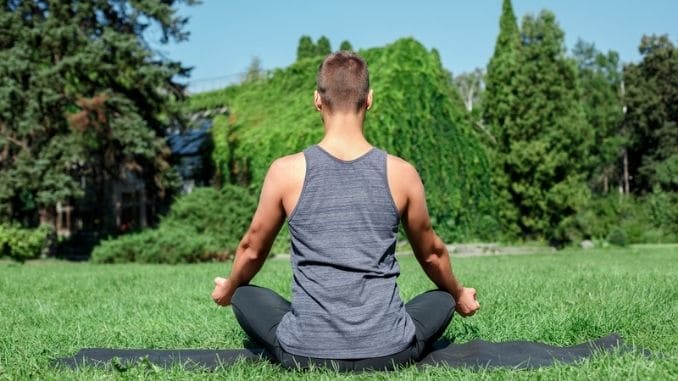Yoga is an ancient practice that has been around for thousands of years. It is best known as a way to stretch, strengthen and relax the body. Studies show that yoga can increase your sense of calmness and decrease anxiety by utilizing self-awareness and breathing techniques. Unfortunately, we live in a world where sitting for long periods of time seems to be the norm. Yoga can counteract the disadvantages of a sedentary lifestyle and the negative effects it can have on the body and mind. Yoga provides a great way to stretch out those kinks and knots that develop from sitting at a computer or driving for long periods of time. Yoga Asana (physical postures) strengthen the nervous system, muscles around the spine, and joints while creating space for the vital organs. Pranayama (intentional breathing) can help deliver oxygenated blood to our limbs, while fueling the mind with focus and clarity.
Downward Dog into Upward Dog
Downward Dog, also known as “Adho Mukha Svanasana”, is a yoga pose that places the body in an inverted V-shape position with your palms on the ground and your feet grounded behind you. This position stretches the back and backside of legs while strengthening the upper body and legs. Being in this inverted position will also stimulate blood flow and circulation.
Upward Dog, “Urdhva Mukha Svanasana”, involves placing your weight into your hands and lifting your hips and legs off the floor as your chest reaches forward. This pose stimulates the abdominal muscles and stretches the chest and wrists while lengthening and strengthening the back.
These two poses can be considered opposites. When linked together they create an amazing full body workout with all major muscle groups corresponding and countering each other while transitioning.
Important Considerations Before Starting
Before starting a new exercise, be sure to check in with your body. Some contraindications for this exercise include a wrist injury or carpal tunnel syndrome, late term pregnancy, or injuries to the shoulders, neck, or spine. If you have high blood pressure, check with your doctor before doing any inversions such as Downward Dog.
Secondly, make sure you have adequate strength in your upper body to perform this transition exercise. If you are not sure, start by modifying these 2 positions using support from the back of a chair or wall.
If possible, use bare feet on your mat and in your yoga practice to fine tune the muscles in the feet.
Here’s How to Do It:
Down Dog
- Begin in a 4-point (table top) position on your mat
- Inhale and curl your toes under, then exhale as you lift your hips up and back into an inverted V position. Keep a slight knee bend at first to lengthen through your arms and spine, then gradually straighten your legs as you work your heels toward the floor.
- Keep your hands shoulder-width apart, spreading your fingers wide and pressing into your index finger and thumb.
- Hold this position for 2 deep breaths to start.
Transition
- From Down Dog, float your way down into a plank position.
- Engage your abdominal muscles and keep your spine neutral.
- Option: Bend your elbows, keeping them in toward the ribcage, lowering down into a low push up position before transitioning to Upward Dog.
Upward Dog
- From Plank, untuck your toes and press down through the tops of your feet and toes to strengthen your legs and activate your quadriceps
- Keeping your knees and hips off the mat, draw your chest forward and upward, keeping your neck in line with your spine.
- Keep your core and legs engaged and make sure your shoulders are pressed down away from your ears.
- Hold this position for 2 deep breaths before shifting your hips up and back and flipping your feet back to the down dog position.
While there are literally thousands of different types of yoga poses and sequences, the simple combination of linking Downward Dog into Upward Dog has many benefits. When done correctly and frequently these postures strengthen the entire body, increases circulation, help to improve overall flexibility, decrease pain, and improve body alignment and posture.
When yoga is utilized as a daily practice, it can contribute to chronic pain management by counteracting years of bad posture or injuries. By connecting with your breath, we can learn to slow our busy minds and calm the tension that can add to our aches and pains. With time, our posture changes and our bodies feel stronger and more supported, resulting in less overall pain.
Finding exercises and stretches that are right for you is important to your long-term success. Back pain can really affect your quality of life. The good news is there are ways to help alleviate symptoms, take better care of yourself, and take back control over your life.
If you are looking for a program to help you overcome your back pain, then check out Low Back Pain Solved:

